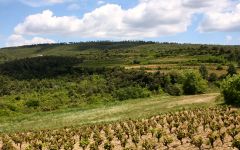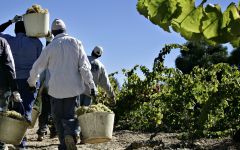Llopart Brut Reserva Rose 2014
-
Wine
Spectator



Product Details
Your Rating
Somm Note
Winemaker Notes
Blend: 60% Monastrell, 20% Garnacha, 20% Pinot Noir
Professional Ratings
-
Wine Spectator
An elegant rosé Cava, with spice and graphite accents lacing flavors of white raspberry, apricot and toast. Creamy and mouthwatering, showing a lasting hint of smoke on the finish. Drink now through 2019.
Other Vintages
2020-
Wine
Spectator -
James
Suckling
-
Wilfred
Wong
-
Wilfred
Wong
-
Jeb
Dunnuck
-
Wilfred
Wong -
Wine
Spectator -
James
Suckling
-
Wine
Enthusiast
-
Robert
Parker
-
Wine
Enthusiast
-
Robert
Parker -
Wine
Enthusiast









The Llopart family has been growing grapes since 1385, proven by a document written in Latin that is kept in the family’s archive proving a transfer of land to Bernardus Leopardi, one of the family’s ancestors, located on the winery’s present estate, known as Can Llopart de Subirats. Over the following centuries, the family dedicated themselves to the cultivation of grapevines, wheat, and olive trees, until the late 1800’s when they committed themselves wholly to grape growing. After years of tests, the family finally released their first Cava, produced in the estate’s old masia, or country house, in 1887.
In the 1950’s the family status as a premier cava producer was solidified, when Pere Llopart i Vilarós revolutionized the operation and consolidated the production of small quantity, high quality sparkling wine, produced in the methode champenoise style.
Llopart is famous for the quality of their unique, low production sparkling wines, which express the terroir of their unique location. Their estate sits on a limestone mantle with a surface soil that is a mixture of clay and siliceous components. The vineyards are cared for with the most traditional organic methods possible. Llopart is one of the most unique, traditional, and authentic sparkling wine producers in the world.

What are the different types of sparkling rosé wine?
Rosé sparkling wines like Champagne, Prosecco, Cava, and others make a fun and festive alternative to regular bubbles—but don’t snub these as not as important as their clear counterparts. Rosé Champagnes (i.e., those coming from the Champagne region of France) are made in the same basic way as regular Champagne, from the same grapes and the same region. Most other regions where sparkling wine is produced, and where red grape varieties also grow, also make a rosé version.
How is sparkling rosé wine made?
There are two main methods to make rosé sparkling wine. Typically, either white wine is blended with red wine to make a rosé base wine, or only red grapes are used but spend a short period of time on their skins (maceration) to make rosé colored juice before pressing and fermentation. In either case the base wine goes through a second fermentation (the one that makes the bubbles) through any of the various sparkling wine making methods.
What gives rosé Champagne and sparkling wine their color and bubbles?
The bubbles in sparkling wine are formed when the base wine undergoes a secondary fermentation, which traps carbon dioxide inside the bottle or fermentation vessel. During this stage, the yeast cells can absorb some of the wine’s color but for the most part, the pink hue remains.
How do you serve rosé sparkling wine?
Treat rosé sparkling wine as you would treat any Champagne, Prosecco, Cava, and other sparkling wine of comparable quality. For storing in any long-term sense, these should be kept at cellar temperature, about 55F. For serving, cool to about 40F to 50F. As for drinking, the best glasses have a stem and a flute or tulip shape to allow the bead (bubbles) and beautiful rosé hue to show.
How long do rosé Champagne and sparkling wine last?
Most rosé versions of Prosecco, Champagne, Cava or others around the “$20 and under” price point are intended for early consumption. Those made using the traditional method with extended cellar time before release (e.g., Champagne or Crémant) can typically improve with age. If you are unsure, definitely consult a wine professional for guidance.

A superior source of white grapes for the production of Spain’s prized sparkling wine, Cava, the Penedes region is part of Catalunya and sits just south of Barcelona. Medio Penedès is the most productive source of the Cava grapes, Macabeo, Xarel-lo, and Parellada. Penedes also grows Garnacha and Tempranillo (here called Ull de Llebre in Catalan), for high quality reds and rosès.
